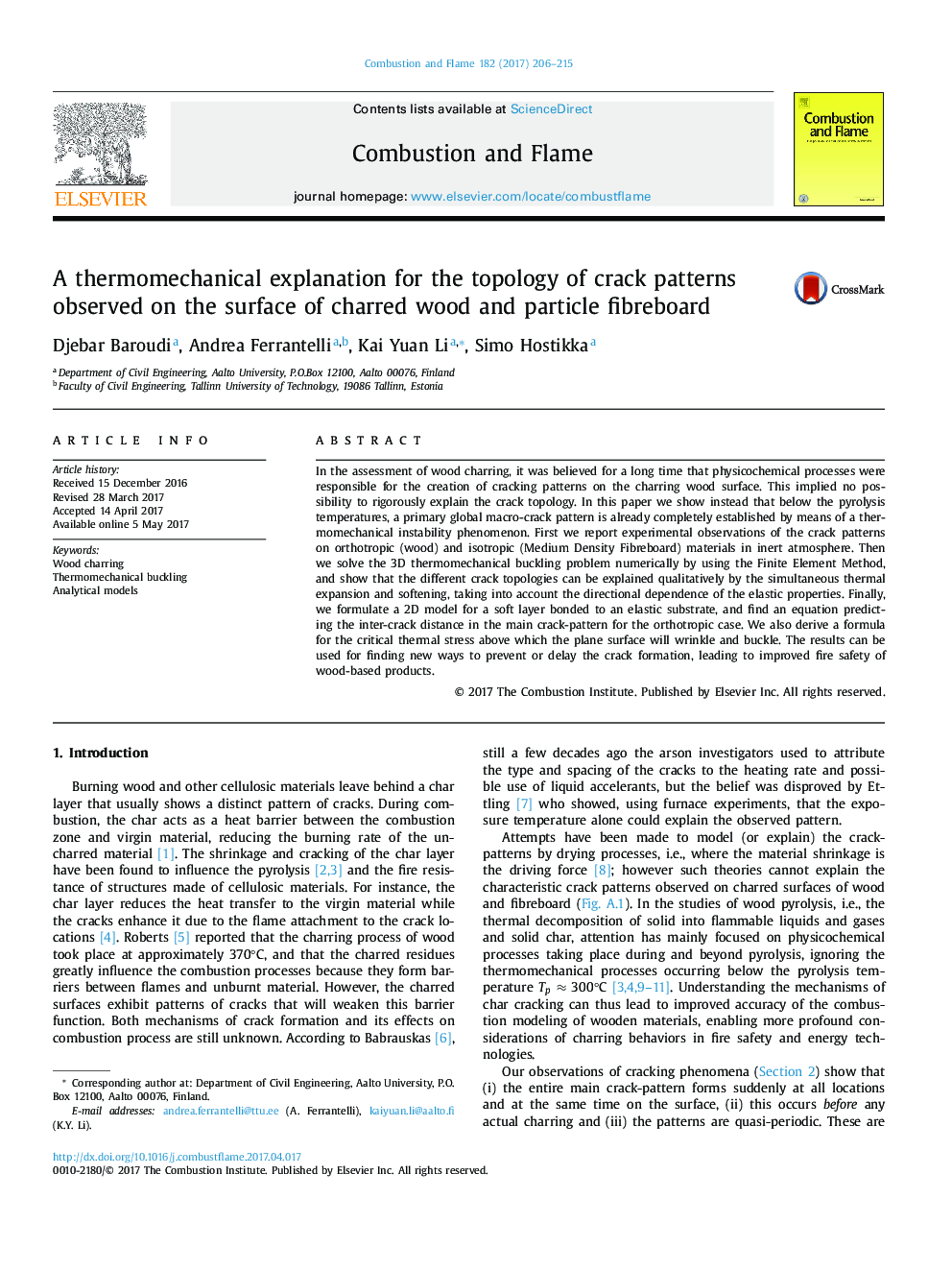| Article ID | Journal | Published Year | Pages | File Type |
|---|---|---|---|---|
| 4764424 | Combustion and Flame | 2017 | 10 Pages |
Abstract
In the assessment of wood charring, it was believed for a long time that physicochemical processes were responsible for the creation of cracking patterns on the charring wood surface. This implied no possibility to rigorously explain the crack topology. In this paper we show instead that below the pyrolysis temperatures, a primary global macro-crack pattern is already completely established by means of a thermomechanical instability phenomenon. First we report experimental observations of the crack patterns on orthotropic (wood) and isotropic (Medium Density Fibreboard) materials in inert atmosphere. Then we solve the 3D thermomechanical buckling problem numerically by using the Finite Element Method, and show that the different crack topologies can be explained qualitatively by the simultaneous thermal expansion and softening, taking into account the directional dependence of the elastic properties. Finally, we formulate a 2D model for a soft layer bonded to an elastic substrate, and find an equation predicting the inter-crack distance in the main crack-pattern for the orthotropic case. We also derive a formula for the critical thermal stress above which the plane surface will wrinkle and buckle. The results can be used for finding new ways to prevent or delay the crack formation, leading to improved fire safety of wood-based products.
Keywords
Related Topics
Physical Sciences and Engineering
Chemical Engineering
Chemical Engineering (General)
Authors
Djebar Baroudi, Andrea Ferrantelli, Kai Yuan Li, Simo Hostikka,
